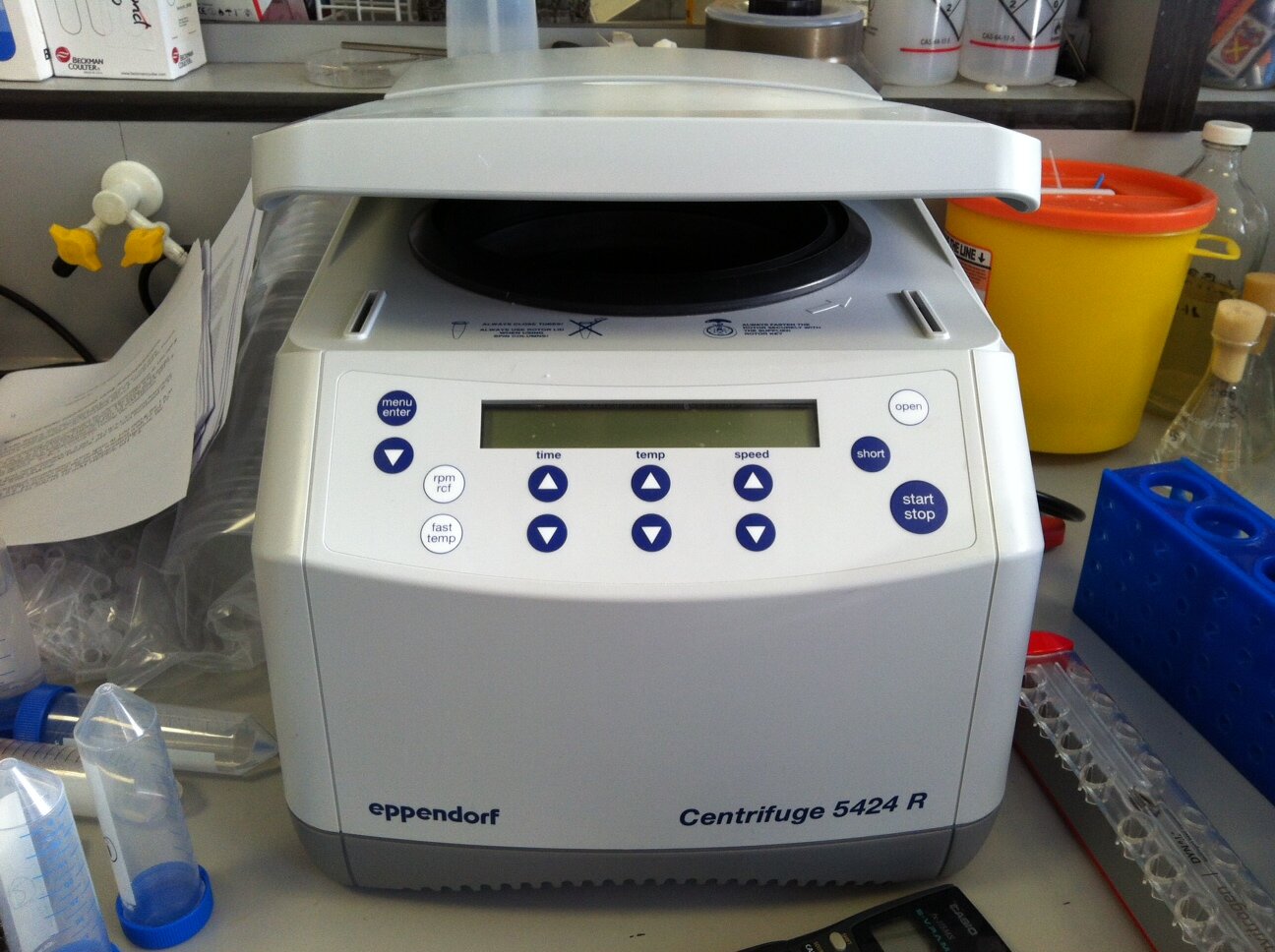Centrifuge
What are they and why do we use them? What types are there?
A centrifuge is a device capable of spinning at extremely high speeds. This allows for the separation of substances by density. Centrifuges are especially useful in molecular biology for ‘pelleting’ cells - a quick spin to accumulate all of the cells in liquid media at the bottom of the tube with minimal casualties. There are tons of different centrifuge types, but you mostly care about;
Speed - Measured in Revolutions per minute (RPM) which is affected by size or Relative Centrifugal Force (RCF, g) a size independent measurement.
Low Speed - Max speed 5000 rpm
Very few protocols will benefit from speeds faster than 5000 rpm.
High Speed - Max speed 15,000-30,000 rpm
Ultracentrifuge - Max speed 150,000 rpm
Unnecessarily fast for synbio.
Size
Microcentrifuge/Microfuge - Capable of holding tubes varying in size from PCR tube -> 1.5 ml microcentrifuge tube. Can be low speed or high speed.
Benchtop Centrifuge - Capable of holding 15 ml and 50 ml falcon tubes. Generally low-speed.
Refrigeration
Non-refrigerated - Still useful for most protocols.
Refrigerated - Necessary for some specific protocols, such as making competent cells.
Some other types of centrifuge that you might encounter include;
Swinging bucket - Tubes are in buckets that swing outwards to a 90° angle as the spin begins. Most common for larger benchtop centrifuges.
Fixed Angle - Hold tubes at 45° angle during spin. If you position the wing of the tube facing outwards before the spin you will have an easy way to figure out where the pellet will appear. Very common centrifuge type.
Vertical Rotor - Tubes are vertical, shortest path length. Pellet will appear on the side of the tube, rather than the bottom.
Continuous Flow - Processes a large volume by continuously adding material and extracting fractionated substances.
Gas - Airtight, allows for sedimentation of gases. Not necessary for biotech.
When do you use?
Filtration and Sedimentation are the two primary purposes of a centrifuge.
Centrifuges are useful for a ton of protocols that require the pelleting of cells. The miniprep protocol and centrifuge protein purification are especially dependent on the use of a centrifuge in order to filter substances across a membrane.
Sometimes a centrifuge is useful just for spinning a tube that has been dropped in order to get all the liquid back into the bottom of the tube.
Obtaining a large refrigerated centrifuge and -80°C Freezer are two difficult but necessary pieces of equipment you need for producing and storing competent cells.
How do you use?
The most important thing is to BALANCE your centrifuge. The weight of any tube added to a centrifuge must be balanced by another tube of equal weight on exactly the opposite side. Wells in a microfuge are often numbered, but you should also be able to tell visually.
Use a weighing balance to check that the tubes are indeed of exactly the same weight. Add sterile RO water to the lighter tube using sterile technique to balance the tubes. If you have an uneven number of tubes, label a new tube ‘blank’ and fill it with dH20 so that it is exactly equal in weight to the extra tube.
If the centrifuge shakes or wobbles constantly, it' is uneven. Chronically uneven centrifuges may be damaged and need to be realigned by a professional. Don’t risk your life by running them. However a little bit of wobbling as it gets up to speed is normal, as it will pass by the resonance frequency of the bench. It should quieten down once at max speed. If not, stop it and fix it or this could be you! I would never dare try DIY a centrifuge, they are in the ‘too dangerous’ category alongside autoclaves.
If you have a refrigerated centrifuge, turn the temperature back to room temp after use to avoid overworking the small refrigeration unit. Alternatively, you can unplug the centrifuge after use.

